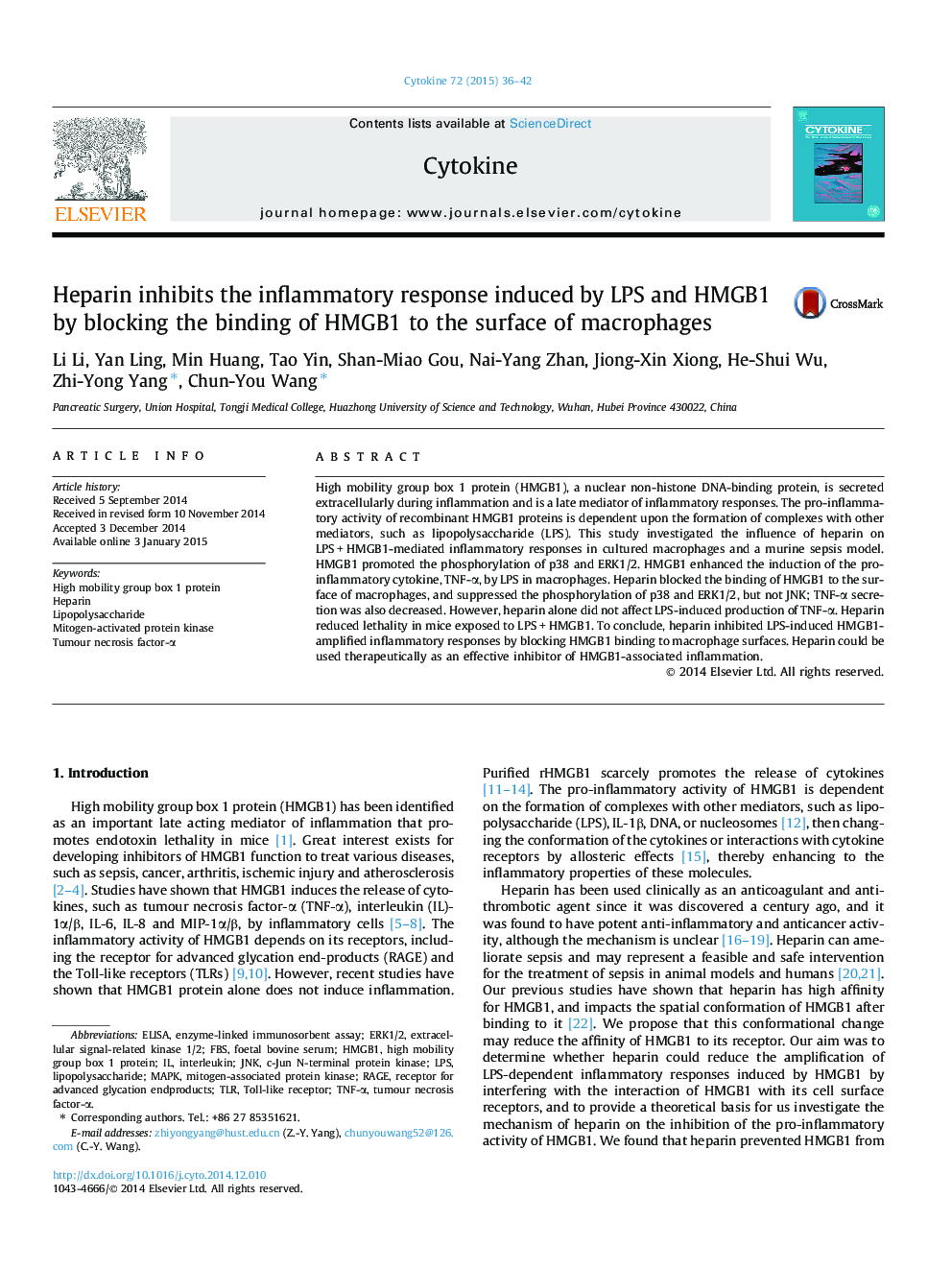| Article ID | Journal | Published Year | Pages | File Type |
|---|---|---|---|---|
| 2794103 | Cytokine | 2015 | 7 Pages |
•HMGB1 potentiates LPS-induced production of TNF-α.•HMGB1 promoted the phosphorylation of p38 and ERK1/2.•Heparin blocked the binding of HMGB1 to the surface of macrophages.•Heparin suppressed the phosphorylation of p38 and ERK1/2.•Heparin may be used as therapeutically effective inhibitors of HMGB1-associated inflammation.
High mobility group box 1 protein (HMGB1), a nuclear non-histone DNA-binding protein, is secreted extracellularly during inflammation and is a late mediator of inflammatory responses. The pro-inflammatory activity of recombinant HMGB1 proteins is dependent upon the formation of complexes with other mediators, such as lipopolysaccharide (LPS). This study investigated the influence of heparin on LPS + HMGB1-mediated inflammatory responses in cultured macrophages and a murine sepsis model. HMGB1 promoted the phosphorylation of p38 and ERK1/2. HMGB1 enhanced the induction of the pro-inflammatory cytokine, TNF-α, by LPS in macrophages. Heparin blocked the binding of HMGB1 to the surface of macrophages, and suppressed the phosphorylation of p38 and ERK1/2, but not JNK; TNF-α secretion was also decreased. However, heparin alone did not affect LPS-induced production of TNF-α. Heparin reduced lethality in mice exposed to LPS + HMGB1. To conclude, heparin inhibited LPS-induced HMGB1-amplified inflammatory responses by blocking HMGB1 binding to macrophage surfaces. Heparin could be used therapeutically as an effective inhibitor of HMGB1-associated inflammation.
Graphical abstractFigure optionsDownload full-size imageDownload as PowerPoint slide
